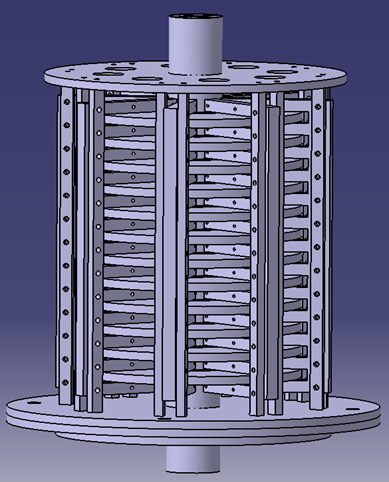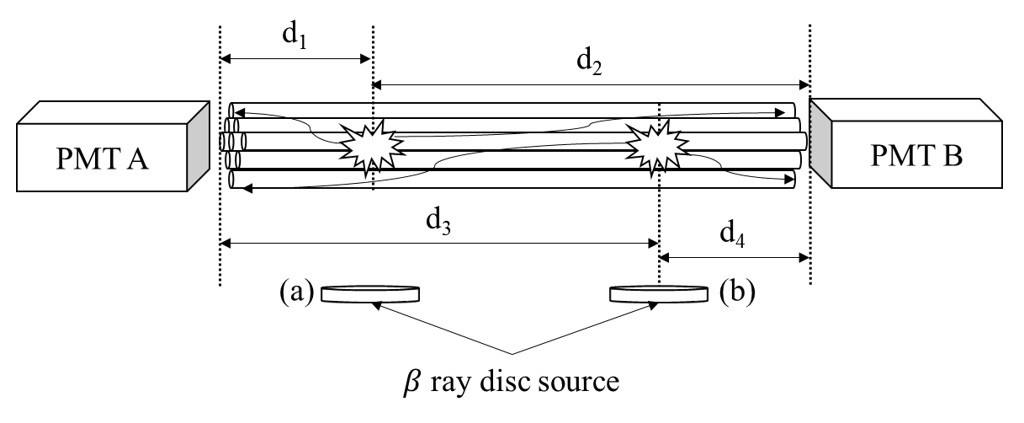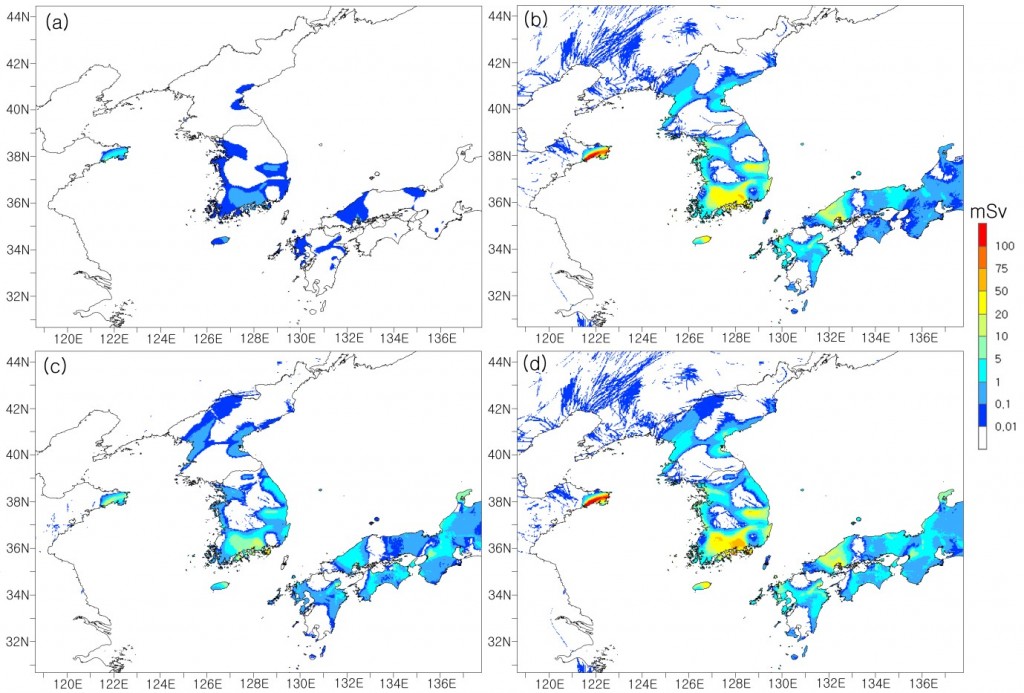Radiation
Environmental radiation safety
The goal of environmental radiation safety is determination of conduct analysis and characterization of radiation effect from various sources on human and environment so that ensure the safety from the radiation. For this purpose, the research covers radiation monitoring systems for the environmental and artificial radiation, shielding materials, radioactive radon and other various fields.
The nuclide recognizing Prompt environmental radiation distribution monitoring system
The nuclide recognizing prompt enviormnental radiation level distribution quick monitoring system based on geography and radionuclide
Result of the nuclide recognizing prompt enviornmental radiation distribution monitoring system
Development of Conceptual Technology for In-situ Detection of Pure Beta Nuclide-Contaminated Spots using Two Points Method
The two points beta detection method was analyzed and experimentally evaluated for in-situ real-time monitoring of the radioactive hot spot from beta-emitting nuclides in the decontamination and decommissioning (D&D) sites of nuclear power plants or nuclear accidents. The system comprised a scintillating fiber, photomultiplier tubes (PMTs), an amplifier, and a counting device for detecting the short-range beta particles emitted during in-situ radiation measurement
Multiple Beta Spectrum Analysis Method Based on Spectrum Fitting
Beta spectrum has a wide range of energy distribution by beta-decay with neutrino. When the sample containing mixed beta emitting nuclides is measured, it is difficult to distinguish each nuclide due to overlapping of spectrums. In the present study, the analysis of the beta spectrum slope based on the curve fitting is suggested to separate the spectrums from the mixed sources
The development of focusing X-ray grid by micromachining
Increased resolution for x-ray radiography tools can give radiation protectoral benefits since it makes it possible to use the low level of radiation source due to its higher resolution in the same energy source
Focusing X-ray grid by micromachining by using MCNP
Radioactive radon concentration survey on the educational institution
Conduct radioactive radon air and water concentration survey on the educational institution and public facilities
Components of real time radon detector RAD7
The development of the beta-ray distribution measurement technology of the site
Develop the in-situ beta ray detector with optic-fiber to measure the depth distribution of beta-ray emitting radionuclide in the soil after D&D
Concept of beta-ray distribution measurement technology
Environmental impact assessment due to the foreign nuclear power plant accident using atmospheric dispersion simulation
The potential environmental impact caused by nuclear power plant (NPP) accidents is gaining more attention after the Fukushima Daiichi NPP accident in 2011. This nuclear accident was not only a problem for Japan, but also an international issue because of the dispersal of radionuclides to the entire world. In the case of hypothetical accidents with Chinese NPPs, the countries located in northeastern Asia could be directly affected by the dispersion of radionuclides through the westerly winds at mid-latitudes.
The distribution of (a) cloud shine; (b) inhalation; (c) ground shine; (d) total dose for the first 10 days with the hypothetical containment bypass accident on April 20, 2015
Real-time Underwater Tritium Monitoring Technology by Electrolysis
Development of underwater tritium detection technology. The system consists of pre-treatment and detection part. Pre-treatment part includes filter and electrolysis part to provide pure hydrogen for detection part. Detection part includes optimized detection chamber for measurement of beta-ray emitted from the tritium.
(a) Primitive designed detection part (b) Detection characteristics for tritium gas (c) The mobile pre-treatment part and (d) Principle of electrolysis and hydrogen generation.
The development of monitoring equipment of boron concentration in reactor coolant
A boron meter is used to measure the concentration of boric acid which used as coolant in reactor, but its improvement has been required due to the low accuracy. Multi-detector boron meter by combination of low and high sensitivity detectors was designed to improve accuracy.
Liquid Metal MHD Application
The research is focused on the magnetohydrodynamic (MHD) analysis and experimental characterization for the liquid metal transportation in fast reactor and nuclear fusion reactor for the future green energy. Among the various MHD applications, ongoing R&D on rectangular and helical DC conduction electromagnetic pumps and ALIP (Annular Linear Induction electromagnetic Pump)
Fundamental Test of Electromagnetic Pump
The design of Annular Linear induction Electromagnetic Pump (ALIP) for high temperature liquid Pb transportation
Drawing detail design of ALIP for circulation of Pb in the neutron beam target experiment loop
Calculate P-Q characteristics of ALIP for high temperature liquid Pb transportation
 3-D view of ALIP
3-D view of ALIP
Design and Performance Evaluation about EM Pump for Test of Coolant Loop of Prototype Gen-IV Sodium-cooled Fast Reactor
Analysis of magnetic field on an electromagnetic pump with a mass flow rate of 20 kg/s and a developed pressure of 4 bar designed for the sodium thermohydraulic test in the Sodium Test Loop for Safety Simulation and Assessment — Phase 1 (STELLA-1)
Cross-sectional diagram of IHX performance test EM pump
3D magnetic field vector distribution of the IHX performance test EM pump
Design and Performance Evaluation about EM Pump for Test
An innovative concept design on coolant system of SMLFR (small modular lead fast reactor) through the analysis of space integrated geometrical and electromagnetic variables of MHD (magnetohydrodynamic) pump for the circulation of LBE (Lead-Bismuth Eutectic) coolant
 3D model of EM pump attached on SMLFR
3D model of EM pump attached on SMLFRPrinciple of EM pump attached on SMLFR
The design of prototype DC electromagnetic pump for liquid lithium charge stripper
Design of DC electromagnetic pump was analyzed by ANSYS code simulation for the formation of liquid lithium film, and prototype DC electromagnetic pump was made with test bed system
Schematic of helical DC electromagnetic pump
Electromagnetic pump analysis with ANSYS code simulation
Test bed system of prototype DC electromagnetic pump
Development of the design methodology of an electromagnetic pump for liquid metal transportation
The generation of computer program based on MHD analysis of the EM pump for circulation of SFR liquid sodium coolant
Optimization graph for ALIP



